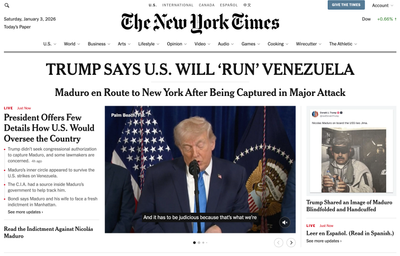The Toothpaste is Out of the Tube
Isaiah Colbert: That ‘AI-Generated’ Anime Is a Slap in the Face to Pro Animators
Unlike the breathtaking Dragon Ball Z fan film, Dragon Ball: Legends—which took the indie studio Studio Stray Dog four years to make—Corridor Digital’s attempt at recreating the passion and energy displayed in early-aughts anime comes off as violently hokey and embarrassing because it’s a soulless recreation of animation techniques haphazardly strewn together without any technical skill or artistic merit.
Forgive my bluntness, but this is article is going to age like warm milk and reeks of old media sticking their heads in the sand. Also, "haphazardly strewn together without any technical skill or artistic merit"? Get out of here.
For those who aren't caught up, here's the video Corridor Digital created:
The short film was created using Stable Diffusion to stylize every shot in the film. To get more context for how this was made, they made this extensive behind the scenes video as well as shared an hour-long step-by-step guide on the nitty gritty details on their Corridor Digital site. A ton of ink has been spilled on this already, so let me just put my quick thoughts out there.
My Opinion
This is one of the most exciting pieces of filmmaking I've seen recently, and just like Niko says in the behind-the-scenes videos and his comments to Kotaku, this was an experiment to see what could be accomplished today. They made an entertaining short that they literally could not do before, and they shared their findings with the world, which I think is great for helping other people achieve their creative vision.
Digital video made it so more people could create movies without going to school and spending massive sums of money to get physical editing stations. Smartphones put a high quality camera in everyone's pocket, enabling more people to do serious photography and video. Digital retouching tools let anyone fix blemishes in their photos instead of needing to bring them to a specialist. Snapshat brought personalized caricatures to everyone instead of making people go find someone in a city park to do it for them.
There have been a million technological advances that changed artistic creation and disrupted industries. You can either stick your head in the sand and complain that things change, or you can adjust how you work to make the most of these new tools and remain relevant.
I do not see this as the death of animation, and I don't see this as a replacement for professional animators (I also don't see GTP4 as a replacement for personal blogs like this, but that's a story for another day). I think there is real value in the work people do to make art, and everyone (including animators) use many tools every single day that disrupted their industry in the past, but never broke it.
if you are a professional animator, I think there are 3 broad paths forward.
- You embrace this new technology and find ways to use it to make your work better. Can you use it to visualize things earlier in the workflow? Can you use it to animate things that aren't as important in a scene and would currently be busywork? Can you use it more aggressively in some cases to create unique art styles that haven't been explored before?
- You don't embrace the tech, but you understand it enough to know how you can do things that it can not. Differentiate your work! 2D animation still exists and there is a market for that, even though Pixar completely disrupted the whole animation world in the 90s, after all.
- You fight the new tech and you try to convince other people not to use it.
Options 1 and 2 can have great results, but the only way option 3 ends up okay is if this tech ends up being a dud and nobody likes what it can do. That's a gamble that I would not want to take, myself. If you fall in that camp, I would seriously suggest focusing your energy on creating cultural (or legal) mores around how this is used. The toothpaste is out of the tube, it's too late to put it back.
